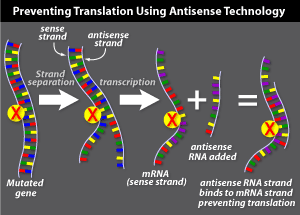Cancer is one of the leading cause of death in today’s world just secondary behind heart disease. According to Rafael Bengoa, director of management of chronic disease at the World Health Organization, 15 to 16 million new cases of cancer emerge every year.
Cancerous cells are continuously dividing and multiplying cells that invade tissues and organs. These cells also have the ability to spread from one location in the body to another, a mechanism commonly referred to as metastasis. Despite advancement in technologies and research on cancer, no scientist precisely knows the cause of cancer. However, they do know that a range of factors such as genetic predisposition, exposure to chemicals or viruses, and even stress could trigger this disease. Many scientists also believe that the clues to the cause of cancer lie in a better understanding of signal transduction and its impact on cell division. Work on the human genome and those of model organisms helps to reveal which genes might play a part in causing cancer. For example, researchers know that mutations of about 300 human genes can unleash uncontrolled division of cells, making them cancerous…
Cancer research is the intense scientific effort to understand disease processes and discover possible therapies. Biotechnology is one field that has helped in the identification of the cancerous cells along with the contrivance of how it can be treated. Though the work is still ongoing to prevent the disease but advancement has been successfully achieved in understanding the structure and nature of action of these cells at the molecular level. Successful therapeutic approaches include chemotherapy, immunotherapy, and genetic therapies. The most traditional among all being Chemotherapy. Using a biotechnological approach, researchers are in a continuous process of developing new drugs that could inhibit formation of new blood vessels in a cancer area and interrupt signal transduction pathways which are involved in cancer development.
Genetic approaches include antisense therapy and gene therapy. Antisense therapy consists of single stranded DNA that complements the messenger RNA in a tumor. The DNA binds to the RNA to block the synthesis of proteins unique to cancer cells. Gene therapy on the other hand involves the use of a virus to deliver into a cancer cell a gene that alters the cell’s carcinogenic behavior.

Inhibitors of tyrosine kinases (imatinib and gefitinib) in the late 1990’s were considered a major breakthrough, as they interfere with cancer processes on a molecular level (which chemotherapy does not).
Over the years a number of Biotechnology companies have successfully conducted clinical trials in the oncology therapeutic area. These Biotechnology clinical trials are meticulously controlled research studies conducted on humans to test the effectiveness and safety of new drugs, medical products, or treatments. To initiate any biotech clinical trials (i.e. testing on humans), it is mandatory for any biotechnology or pharmaceutical company to conduct extensive experiments on animal and human cells both in vitro and in vivo.
After the successful completion of the pre-clinical studies, IND (Investigational New Drug) Application is filed with the regulatory authority requesting permission for biotechnology clinical trials. The drug discovery process is a long process with many hurdles that await the development process. Drugs coming to market for human use must be potent, specific and convenient to take which is much easier said than done. There are huge expectations from pharmaceutical & biotechnology companies to design a small molecule that can be taken by mouth, survive the stomach, reach the bloodstream and last long enough to kill the invading bug, and at the same time cause no side effects.
Ironically with cancer, no good alternative treatments exist. Researchers are still in the process of developing new and better methods for the prevention and treatment of this deadly disease.

